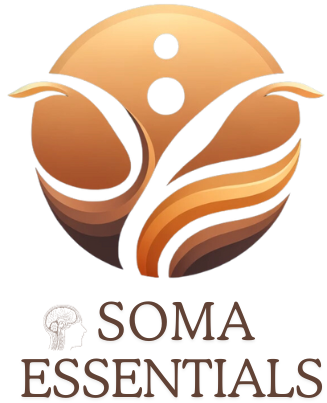Emotional Release through Movement: Enhancing Mind-Body Connection and Promoting Overall Well-being
The mind and body are deeply connected, and this connection plays a crucial role in our overall well-being. However, in today’s fast-paced world, we often neglect this mind-body connection, leading to stress, anxiety, and other emotional issues.
Fortunately, there are various somatic healing techniques that can help us release these pent-up emotions and enhance our mind-body connection. One such powerful method is emotional release through movement.
Through intentional movement and physical expression, we can tap into our emotions, release them, and promote overall well-being. In this article, we will explore the concept of emotional release through movement and how it can help us in our journey towards somatic healing.
We will delve into the various benefits of this technique, how it works, and how it can be incorporated into our daily lives. Whether you are someone struggling with emotional issues or simply looking to deepen your mind-body connection, this article is for you.
So, let’s dive into the world of somatic healing and discover the power of emotional release through movement.
Somatic healing is a holistic approach that focuses on the mind-body connection and uses movement as a way to release emotional tension and promote healing. This practice combines elements of psychology, mindfulness, and physiology to help individuals become more aware of their body and its sensations. Somatic therapy is a form of talk therapy that incorporates body awareness and movement to help individuals process and release emotions. It can be particularly beneficial for those who struggle with anxiety, trauma, or chronic pain.
One of the key principles of somatic movement is the idea that our bodies hold onto emotions and experiences, which can manifest as physical tension or discomfort. Through specific exercises and movements, we can release these emotions and improve our overall well-being. These movements can range from simple stretches to more complex dance-like sequences, all with the intention of connecting the mind and body.
Somatic psychology is another aspect of somatic healing that focuses on how our thoughts and emotions impact our physical well-being. By becoming more aware of our body and its sensations, we can gain insight into our emotions and how they manifest in our physical state. This can help us better understand ourselves and promote self-discovery.
Some common somatic exercises include deep breathing, mindful stretching, and gentle movements that focus on specific areas of the body. These exercises can be done at home or with a trained somatic therapist. It’s important to listen to your body and go at your own pace, as everyone’s journey towards emotional release is unique.
It’s worth noting that somatic healing is not a quick fix. It takes time and patience to develop a deeper mind-body connection and release emotional tension. But with consistent practice, individuals can experience a sense of relief, increased self-awareness, and improved overall well-being.
Somatic Therapy
Somatic therapy is a form of psychotherapy that focuses on the mind-body connection and the role of the body in our emotional and psychological well-being. This approach is based on the belief that our emotions and experiences are stored in our bodies, and that by tuning into our physical sensations and movements, we can release these stored emotions and promote healing.
Through somatic therapy, individuals are encouraged to explore their bodily sensations, movements, and postures in a safe and supportive environment. By becoming more aware of these physical experiences, individuals can gain insight into their emotions, thoughts, and behaviors.
Somatic therapy can be particularly helpful for those who struggle with emotional expression or have experienced trauma. By using movement and physical sensations as a way to access and process emotions, individuals can find a sense of release and relief from pent-up feelings.
Somatic Psychology
Somatic psychology is a field that focuses on the connection between our thoughts, emotions, and physical well-being. It recognizes that our bodies hold onto emotions and experiences, and that these can manifest physically in the form of tension, pain, or illness. This approach to healing emphasizes the importance of addressing both the mind and the body in order to achieve overall well-being.
Through somatic psychology, we can learn to listen to our bodies and understand the messages they are sending us. This allows us to release pent-up emotions and traumas that may be stored in our bodies, leading to a sense of emotional release and relief.
One of the key principles of somatic psychology is that our bodies and minds are deeply interconnected. Our thoughts and emotions can impact our physical health, and vice versa. By becoming more aware of this connection, we can use movement and other somatic healing techniques to promote balance and harmony within ourselves.
Incorporating Somatic Healing into Daily Life
Somatic healing, also known as somatic therapy, is a holistic approach that focuses on the mind-body connection and how emotions are stored in the body. By incorporating somatic healing practices into our daily routines, we can release stored emotions and improve our overall well-being.
One simple way to incorporate somatic healing into our daily lives is through movement. This can include activities such as dancing, yoga, or even going for a walk. By engaging in these physical activities, we can release tension and stress from our bodies, which can help us feel more relaxed and at peace.
In addition to physical movement, mindfulness practices can also be incorporated into our daily routines for somatic healing. This can include meditation, deep breathing exercises, or simply taking a few moments to check in with our body and emotions. By being present and aware of our bodies, we can better understand and release any stored emotions or tension.
Another way to incorporate somatic healing into daily life is by seeking out professional help. Somatic therapists are trained to guide individuals through techniques such as bodywork, breath work, and movement to release stored emotions and promote healing. Regular sessions with a somatic therapist can provide long-term benefits for our mind-body connection and overall well-being.
Somatic Exercises
One of the key aspects of somatic healing is the use of specific exercises to help individuals connect with their body and release emotional tension. These exercises can vary in intensity and form, but they all serve the purpose of promoting a mind-body connection and releasing pent-up emotions.
A simple yet effective somatic exercise is deep breathing. By focusing on our breath, we are able to calm our mind and become more present in our body. This can help release any tension or stress that we may be holding onto.
Another popular somatic exercise is progressive muscle relaxation. This involves tensing and relaxing different muscle groups in the body, which can help release physical and emotional tension. It also allows for a deeper awareness of the body and its sensations.
Some people may find that incorporating movement into their somatic exercises is more beneficial. This can include activities like yoga, tai chi, or dance. These practices not only promote physical movement, but also encourage a deeper connection with the body and its emotions.
Somatic exercises can also involve more targeted techniques, such as body scans or visualizations. These exercises focus on specific areas of the body and use guided imagery to help release any stored emotions or tension.
By incorporating somatic exercises into our daily routine, we can improve our overall well-being by connecting with our body and releasing emotional tension. These exercises can be done at any time and in any place, making them easily accessible for anyone looking to enhance their mind-body connection.
Principles of Somatic Movement
Somatic movement is a form of therapy that focuses on the connection between the mind and body. It acknowledges that emotions, thoughts, and physical sensations are all interconnected and can affect our overall well-being. By engaging in specific movements and exercises, somatic therapy aims to release tension, trauma, and other negative emotions that are stored in the body.
There are several key principles that guide somatic movement practices:
1. Body Awareness
2. Breathwork
3. Mindful Movement
These principles help individuals become more in tune with their bodies and develop a deeper understanding of how their emotions and physical sensations are connected. By paying attention to the body and its signals, individuals can learn to release tension and emotions through movement.
The first principle, body awareness, involves paying attention to physical sensations in the body without judgment. This can help individuals identify areas of tension or discomfort that may be linked to emotional stress or trauma.
The second principle, breathwork, involves using the breath as a tool for releasing tension and promoting relaxation. By breathing deeply and intentionally, individuals can calm their nervous system and release any stored emotions in the body.
The third principle, mindful movement, involves moving slowly and intentionally while paying attention to how the body feels. This allows individuals to connect with their body’s natural movements and release tension and emotions in a safe and controlled manner.
By incorporating these principles into somatic movement practices, individuals can enhance their mind-body connection and promote overall well-being. Somatic movement can help individuals become more in tune with their bodies, release tension and emotions, and improve their overall quality of life.
Emotional release through movement is a powerful tool that can enhance our mind-body connection and promote overall well-being. By incorporating somatic healing techniques into our lives, we can become more aware of our emotions, release tension, and foster self-discovery. Remember to be patient with yourself and listen to your body as you embark on this journey.

